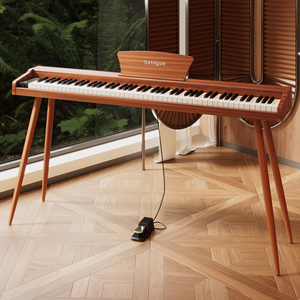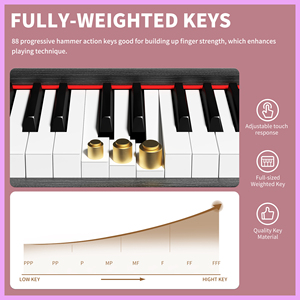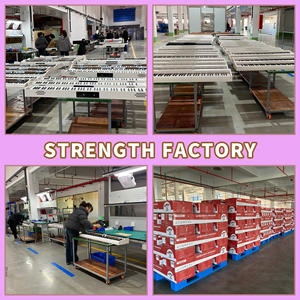
All categories
Featured selections
Trade Assurance
Buyer Central
Help Center
Get the app
Become a supplier

(219 products available)
















































Piano cover cloths are used to protect pianos from dust, moisture, and physical damage. They come in various materials, each with its own advantages. Here are some common types:
Microfiber Piano Cover Cloths
Microfiber is a synthetic material made of very fine fibers. It is commonly used for piano cover cloth due to its durability, softness, and excellent dust-attracting properties. Microfiber cloths effectively trap dust and fingerprints, preventing them from smudging the piano's surface. They are easy to clean and maintain, as they can be washed machine. This material is also less likely to scratch delicate surfaces compared to other materials. Because of their versatility, they can be used for both upright and grand pianos.
Cotton Piano Cover Cloths
Cotton cloths are a traditional choice for piano covering. They are breathable, absorbent, and gentle on the piano's finish. Cotton covers protect against dust and moisture, preventing potential damage to the piano's surface. They are easy to clean and can be washed machine. However, cotton cloths may not trap dust as effectively as microfiber. They are available in various thicknesses and weaves, providing different levels of protection. Some cotton covers are treated with special coatings to enhance their durability and dust-repelling properties.
Velvet Piano Cover Cloths
Velvet cloths add a touch of elegance and luxury to the piano. They are thick and plush, providing excellent protection against dust and physical damage. Velvet covers are particularly suited for grand pianos, as they drape beautifully over the curves of the piano's body. They are available in various colors and can complement the interior decor of a room. However, velvet piano cover cloths may require more maintenance than other materials, as they can easily develop marks or stains.
Nylon Piano Cover Cloths
Nylon cloths are a durable and water-resistant option for piano covering. They are lightweight, easy to handle, and provide good protection against dust and moisture. Nylon covers are particularly useful in environments with high humidity or where the piano is exposed to direct sunlight. They are also less prone to fading or discoloration over time. However, nylon cloths may not be as breathable as other materials, potentially trapping moisture beneath the cover.
Piano cover cloths have several usage scenarios, including:
Piano Maintenance
During piano maintenance, piano technicians use cloth covers to protect the keys, strings, and other parts of the instrument from dust and debris. These covers ensure that the piano remains clean and free from any potential damage while maintenance work is carried out.
Piano Performance
Piano performance cloths are used to cover the piano during short breaks or interludes in a performance. They protect the instrument from stage lights, dust, and any accidental spills. This ensures that the piano remains in optimal condition throughout the performance.
Piano Transportation
Piano covers are essential when protecting the instrument from scratches, dents, and environmental factors. They ensure the piano arrives in pristine condition, ready for performance or rehearsal.
Rehearsals
Piano cloths are used during rehearsals to protect the instrument from accidental damage, spills, or dust. They help maintain the piano's appearance and functionality, allowing musicians to focus on their performance.
Piano Storage
Pianos stored in attics or basements can be covered with cloth to shield them from dust, moisture, and potential pests. This ensures that the instrument remains protected and functional when needed.
Dust Protection
Pianos located near open windows or high-traffic areas can benefit from cloth covers to prevent dust, pollen, and other debris from entering the instrument. This keeps the piano clean and reduces the need for frequent maintenance.
Child Protection
Pianos in homes with children can be covered with cloth to prevent curious hands from accidentally pressing the keys or causing damage. It acts as a barrier, ensuring the piano remains undisturbed.
Aesthetic Appeal
Piano cloths come in various colors and patterns, enhancing the instrument's aesthetic appeal. They can match the décor of a room or add a touch of elegance to the piano, contributing to the overall visual appeal of a performance or setting.
When shopping for a piano cover, it is essential to consider several factors to ensure the proper cloth is purchased for the piano. Here are some of them:
Durability
It is important to choose a durable cover that can withstand frequent handling and exposure to different environmental conditions. Select high-quality materials such as cotton, polyester, or synthetic blends. These materials are known for their strength and longevity. Avoid covers made from flimsy or easily damaged fabrics, as they may not provide adequate protection in the long run.
Size and fit
The cover needs to fit the piano perfectly for efficient protection. Measure the dimensions of the piano, including its height, width, and depth, and compare them with the cover's specifications. Look for covers specifically designed for different types of pianos, such as upright, grand, or digital pianos. A properly fitted cover ensures complete coverage and prevents dust, moisture, and pests from entering the instrument.
Aesthetic appeal
One thing people want when shopping for a piano cover is its aesthetic appeal. After all, it is the feature that will make them want to buy it. When choosing a cover, consider the material's color and design and how well it will complement the decor of the room where the piano is located. The cover should enhance the piano's appearance and blend seamlessly with its surroundings.
Protection
One of the primary functions of piano cover cloth is to protect the piano. It guards the instrument against dust, dirt, spills, and scratches. These factors can damage the piano's finish and mechanical parts, leading to a decline in its appearance and sound quality. The cover ensures the piano remains pristine and requires less maintenance over time.
Preservation
Piano cover cloth helps preserve the piano's finish. Direct exposure to sunlight can cause fading and discoloration. The covers shield the piano from harmful UV rays, ensuring its appearance remains unchanged for years. This preservation aspect is vital for maintaining the piano's value.
Material
Most piano cover cloths are made from high-quality materials such as velvet, microfiber, cotton, or synthetic fabrics. These materials are chosen for their durability, softness, and protective properties. Each material has its benefits, from the luxurious feel of velvet to the practicality of microfiber.
Fit
Piano cover cloths come in various sizes to fit different piano models perfectly. Whether it's an upright piano, grand piano, or digital piano, there's a cover to match. These covers are designed to fit snugly, ensuring optimal protection and a neat appearance.
Design
The piano cover cloths feature aesthetic designs. From classic solid colors to intricate patterns, there is a cover to suit every taste and piano style. These designs enhance the piano's appearance and complement the overall decor of the room.
Customization
Some piano cover cloths can be customized. Buyers can choose specific colors, patterns, and materials to create a cover that perfectly matches their preferences and piano. This customization adds a personal touch.
Ease of Use
Piano cover cloths are easy to put on and take off. They often come with elastic edges or straps to ensure a secure fit. This feature makes it convenient to use the cover daily.
Q1: How often should someone change their piano cover cloth?
A1: The frequency of changing the piano cover cloth depends on how often it gets dirty. If the cloth is used daily, it should be changed at least once a week. However, if the cloth is used less frequently, it can be changed once every two weeks.
Q2: Can a piano cover cloth prevent fading of the piano finish?
A2: Yes, a piano cover cloth can help to prevent fading of the piano finish. It acts as a barrier against direct sunlight, dust, and other environmental factors that can cause the piano finish to fade over time.
Q3: How do I store my piano cover cloth when not in use?
A3: To store a piano cover cloth when not in use, fold it neatly and place it in a dry, clean, and well-ventilated area. Avoid storing the cloth in damp or humid places, as this can cause mildew or mold growth. It is also essential to ensure that the storage area is free from pests, as they can damage the cloth.
Q4: Can a piano cover cloth affect the sound of the piano?
A4: A piano cover cloth does not directly affect the sound of the piano. However, if the cloth is too thick or heavy, it can muffle the sound of the piano. It is essential to choose a cover cloth that is appropriate for the piano's size and weight.